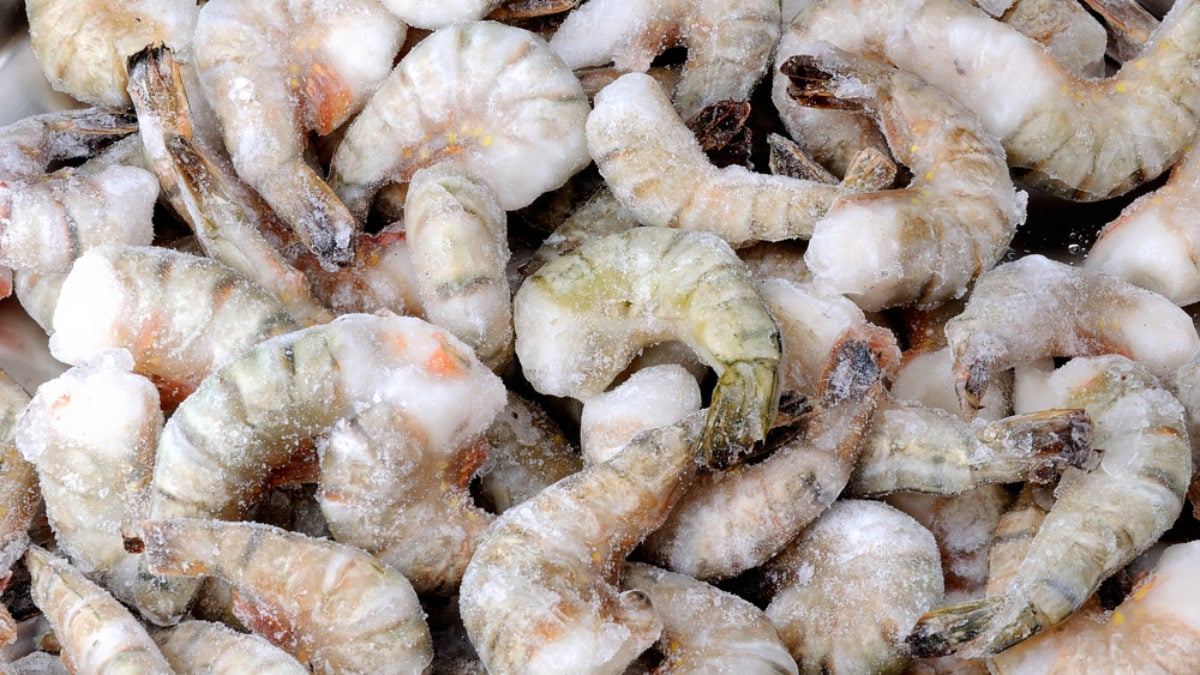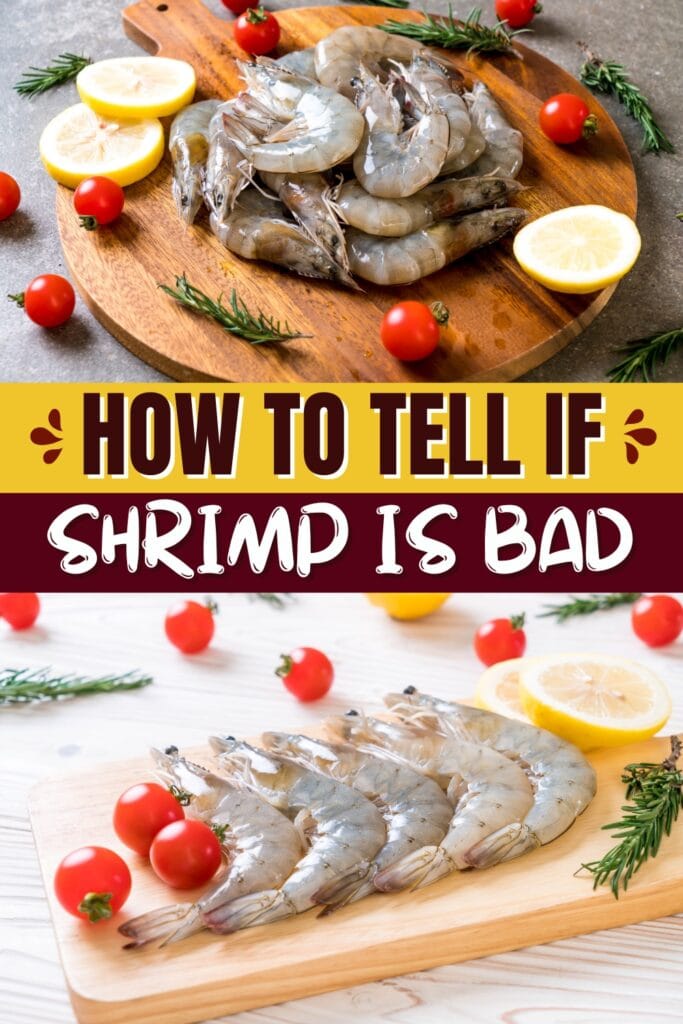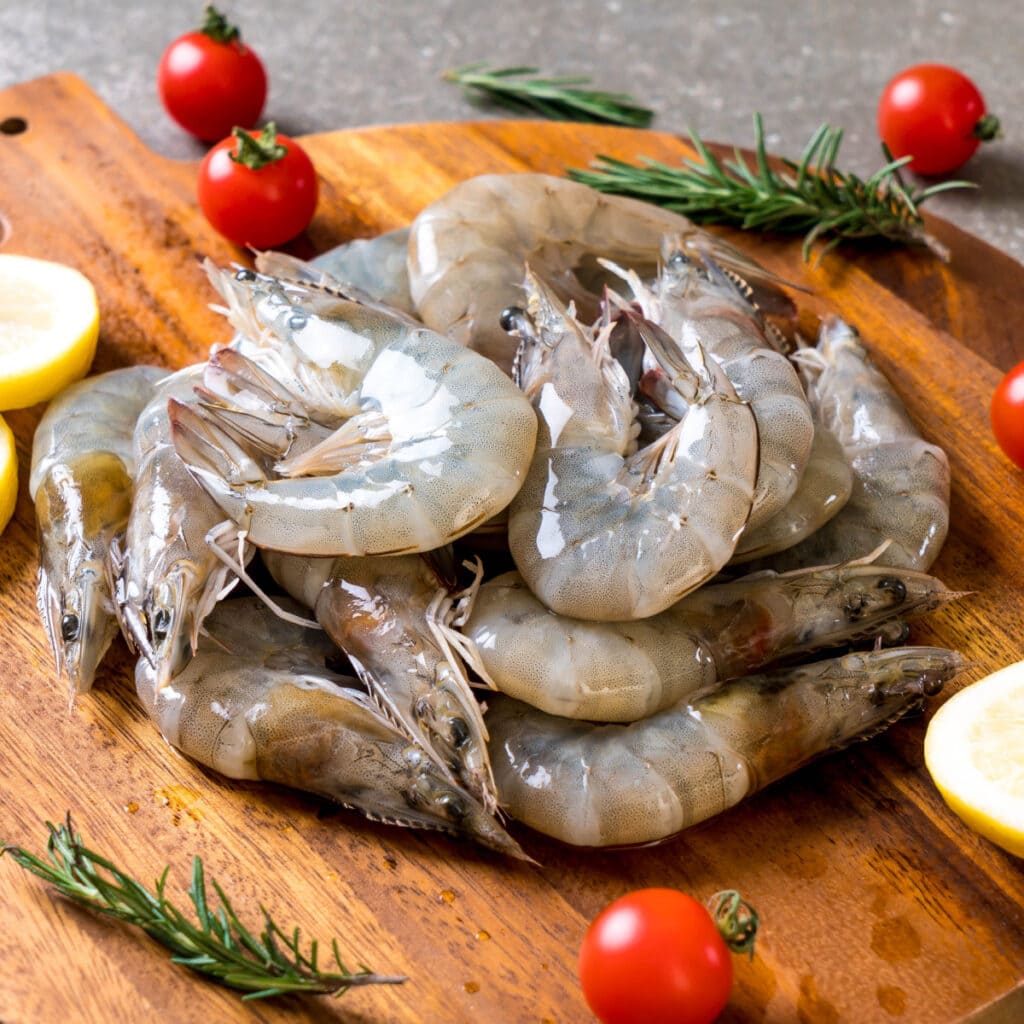Visual Inspection Of Shrimp

To determine if shrimp is bad, a visual inspection is essential. Fresh shrimp should have a vibrant color and a translucent appearance. Any discoloration, such as a gray or black hue, could indicate spoilage due to oxidation or bacterial growth. Additionally, patches of unusual or abnormal colors like green, yellow, or blue are not typical of fresh shrimp and suggest deterioration. These visual indicators should not be ignored, as they serve as clear signs that the shrimp may no longer be safe to consume. Always trust your eyes when examining the appearance of shrimp.
Visual Appearance Of Fresh Shrimp
Fresh shrimp should have a vibrant color and a translucent appearance. The shells should be clear and clean, with a pearl-like color. The bodies of the shrimp should be firm and still attached to the shell. The eyes should be prominent and shiny, indicating freshness. Any discoloration, such as a gray or black hue, could indicate spoilage due to oxidation or bacterial growth. Patches of unusual or abnormal colors like green, yellow, or blue are not typical of fresh shrimp and suggest deterioration. It is important to visually inspect shrimp before consuming them to ensure their freshness and safety.
Signs Of Spoilage In Shrimp
Some signs of spoilage in shrimp include a slimy texture on the surface or underneath the shell. The shrimp may also have an unusual or off-putting odor. Discoloration, such as a gray or black hue, could indicate bacterial growth or oxidation. Additionally, patches of green, yellow, or blue colors are not normal and suggest deterioration. Mold or unusual growth may also appear on the shrimp. It is crucial to recognize these signs and discard any shrimp that show these indicators of spoilage to avoid foodborne illnesses.
Smell Test For Shrimp

The smell test is a reliable way to determine if shrimp is still fresh or if it has gone bad. Fresh shrimp should have a pleasant, slightly salty and briny odor, reminiscent of the sea. On the other hand, spoiled shrimp may emit a strong, pungent, or ammonia-like smell. If the shrimp has a foul or unpleasant odor, it is best to discard it immediately. Remember, your sense of smell is a powerful tool in detecting spoiled shrimp and avoiding any potential foodborne illnesses.
Fresh Shrimp Aroma
Fresh shrimp should have a pleasant aroma that is slightly salty and briny, reminiscent of the sea. When you bring the shrimp close to your nose, you should be able to detect a distinct smell that is fresh and clean. This aroma is a confirmation of the shrimp’s freshness and quality. However, if the shrimp emits an overpowering fishy or sour odor, it is a clear indication that it is no longer fresh and may be spoiled. Trust your sense of smell, as it is a reliable tool in identifying the freshness of shrimp.
Identifying Bad Smell In Shrimp
When it comes to identifying bad smell in shrimp, trust your sense of smell. Fresh shrimp should have a pleasant aroma that is slightly salty and briny, reminiscent of the sea. However, if the shrimp emits an overpowering fishy or sour odor, it is a clear indication that it is no longer fresh and may be spoiled. Pay attention to any strong, unpleasant smells that are not characteristic of fresh shrimp. This can be a reliable sign of spoilage and a warning to avoid consuming the shrimp.
Texture Check For Shrimp

When checking the texture of shrimp, it is important to look for specific qualities that indicate freshness. Good quality shrimp will have a firm and slightly springy texture. The meat should feel smooth and plump to the touch. On the other hand, spoiled shrimp may feel slimy or mushy, indicating a loss of freshness. Additionally, if the shrimp falls apart easily or feels too soft, it is a sign of spoilage. Remember to pay attention to the texture when assessing the quality of shrimp to ensure a safe and enjoyable dining experience.
Texture Of Good Quality Shrimp
Good quality shrimp should have a firm and slightly springy texture. When touched, the meat should feel smooth and plump. The texture of fresh shrimp should not be slimy or mushy. It should hold its shape and have a pleasant bounce. This indicates that the shrimp is fresh and of good quality. When assessing the texture, feel for any softness or a tendency for the shrimp to fall apart easily, as these are signs of spoilage. A firm and plump texture is a reliable indicator of the freshness and quality of shrimp.
Detecting Sliminess Or Softness In Spoiled Shrimp
Spoiled shrimp can exhibit sliminess or a soft texture, indicating that it is no longer safe to consume. When assessing the quality of shrimp, it is important to check for any signs of sliminess on the surface or underneath the shell. Fresh shrimp should feel firm and slightly springy to the touch. If the shrimp feels soft or mushy, it is a clear indication of spoilage. Additionally, a slimy texture is a sign that bacteria have started to break down the proteins in the shrimp, making it unsafe to eat.
Taste Of Shrimp

The taste of fresh and properly cooked shrimp is mildly sweet and briny, with a delicate seafood flavor. When shrimp is cooked correctly, it should have a tender and slightly firm texture. The natural sweetness of the shrimp should not be overpowering, and there should be no unpleasant or off flavors. However, if you detect a bitter or ammonia-like taste when biting into the shrimp, it is a clear indication that the shrimp is spoiled and should not be consumed. Trust your taste buds to determine the quality and freshness of the shrimp.
Taste Of Fresh And Edible Shrimp
The taste of fresh and properly cooked shrimp is mildly sweet and briny, with a delicate seafood flavor. When shrimp is cooked correctly, it should have a tender and slightly firm texture. The natural sweetness of the shrimp should not be overpowering, and there should be no unpleasant or off flavors. However, if you detect a bitter or ammonia-like taste when biting into the shrimp, it is a clear indication that the shrimp is spoiled and should not be consumed. Trust your taste buds to determine the quality and freshness of the shrimp.
Recognizing Bitter Or Off Flavors In Spoiled Shrimp
When shrimp is spoiled, it can have a noticeable bitter or off flavor. This is a clear indication that the shrimp is no longer edible. If you bite into the shrimp and detect an unpleasant taste that is different from its natural sweetness, it is best to discard it. Trust your taste buds to determine if the shrimp has gone bad. Remember, consuming spoiled shrimp can lead to foodborne illnesses, so it’s important to be vigilant in identifying any off flavors before consuming.
Other Indicators Of Spoiled Shrimp

In addition to visual appearance, smell, texture, and taste, there are other indicators that can help you determine if shrimp is spoiled. These include:
- Shelf Life and Storage Conditions: Check the expiration date on the packaging and consider the storage conditions. Shrimp that has been stored improperly or past its expiration date is more likely to be spoiled.
- Presence of Discoloration or Mold: Look for any changes in color, such as gray or black spots, or the presence of mold. These are clear signs that the shrimp has gone bad and should not be consumed.
By paying attention to these other indicators, you can ensure that you are consuming fresh and safe shrimp.
Shelf Life And Storage Conditions
When it comes to determining if shrimp is spoiled, it’s essential to consider its shelf life and storage conditions. Check the expiration date on the packaging to ensure that the shrimp hasn’t exceeded its recommended storage time. Additionally, proper storage conditions are crucial. Shrimp should be kept in the refrigerator at temperatures below 40°F (4°C) to maintain its freshness. If the shrimp has been exposed to temperatures above this range for an extended period, it is more likely to be spoiled. Paying attention to these factors will help ensure that you consume safe and fresh shrimp.
Presence Of Discoloration Or Mold
When examining shrimp for signs of spoilage, it’s crucial to check for the presence of discoloration or mold. Fresh shrimp should have a uniform color, with no unusual marks or discoloration. If you notice any patches of brown, gray, or green on the shrimp, it may be an indication of spoilage. Additionally, the presence of mold, either on the shrimp itself or on the packaging, is a clear indicator that the shrimp is no longer safe to consume. Mold growth indicates that bacteria or fungi have proliferated, rendering the shrimp unfit for consumption .
Conclusion

In conclusion, being able to identify the signs of spoilage in shrimp is essential for ensuring food safety. By visually inspecting the shrimp for discoloration or mold, conducting a smell test, checking the texture, and tasting for any off-flavors, consumers can determine if the shrimp is no longer fresh and edible. Additionally, paying attention to other indicators such as shelf life and storage conditions can help in making an informed decision. By following these guidelines and properly storing and handling shrimp, individuals can enjoy this popular seafood without the risk of consuming spoiled shrimp.
Summary Of How To Identify Spoiled Shrimp
To identify spoiled shrimp, it is important to conduct a visual inspection, smell test, texture check, and taste evaluation. Fresh shrimp should have a uniform color and no discoloration or mold. The aroma of fresh shrimp should be pleasant and not have any foul odor. Good quality shrimp should have a firm texture, while spoiled shrimp may feel slimy or soft. When tasting shrimp, it should have a fresh and sweet taste, without any off-flavors such as bitterness. Additionally, paying attention to the shrimp’s shelf life and storage conditions can also help determine if it is spoiled.
Tips For Properly Storing And Handling Shrimp
To ensure the freshness and safety of shrimp, it is important to follow proper storage and handling practices. Here are some tips to keep in mind:
- Refrigerate promptly: Shrimp should be refrigerated at temperatures below 40°F (4°C) as soon as possible after purchase. This helps to slow down bacterial growth and maintain the quality of the shrimp.
- Use airtight containers: Store shrimp in airtight containers or resealable plastic bags to prevent contamination and avoid absorbing odors from other foods in the refrigerator.
- Keep shrimp away from raw meats: To prevent cross-contamination, store shrimp separately from raw meats and poultry.
- Consume within 2-3 days: Shrimp is highly perishable, so it is best to consume it within 2-3 days of purchase to ensure optimal freshness.
- Properly thaw frozen shrimp: If using frozen shrimp, thaw it safely in the refrigerator overnight or under cold running water. Avoid thawing shrimp at room temperature to prevent bacterial growth.
- Handle with clean hands and utensils: Always use clean hands and utensils when handling shrimp to prevent contamination.
By following these tips, you can ensure that your shrimp stays fresh and safe to eat.
FAQ About How To Tell If Shrimp Is Bad: Identifying Signs Of Spoilage
Q: What are the common signs that indicate shrimp has gone bad?
A: Some common signs of spoiled shrimp include a strong fishy odor, slimy texture, discoloration (especially black spots), and a sour or ammonia-like smell.
Q: Can I still eat shrimp if it has been frozen?
A: If frozen properly, shrimp can last for a long time. However, if you notice any signs of spoilage after thawing, such as an off smell, sliminess, or unusual color, it is best to discard it.
Q: How long can cooked shrimp be stored in the refrigerator?
A: Cooked shrimp can be safely stored in the refrigerator for up to 3 days. Make sure to keep it in an airtight container to maintain its freshness.
Q: Is it safe to eat shrimp that has a mild fishy smell?
A: A mild fishy smell is normal for fresh shrimp. However, if the smell is overpowering or unpleasant, it is likely a sign of spoilage, and the shrimp should not be consumed.
Q: Can I use shrimp that has a slightly slimy texture?
A: A slightly slimy texture is often a sign that the shrimp is starting to spoil. It is best to err on the side of caution and avoid consuming shrimp with a slimy feel.
Q: How should fresh shrimp be stored to prevent spoilage?
A: To keep fresh shrimp from spoiling, store them in the coldest part of your refrigerator, preferably in airtight containers or sealed plastic bags. It is also advisable to consume them as soon as possible for the best taste and quality.

Marine Bay Restaurant received the International Food Culture Award 2019 as the Best Szechuan & Hunan Restaurant, enjoying a reputation in North America. Renowned for the tunnel, authentic, and cheap. Known as “Human Taste First Garden,” 2013 Vancouver culinary first book named “Best Chuan Xiang Outlets,” significant temperature and China Eastern Airlines designated outlets.